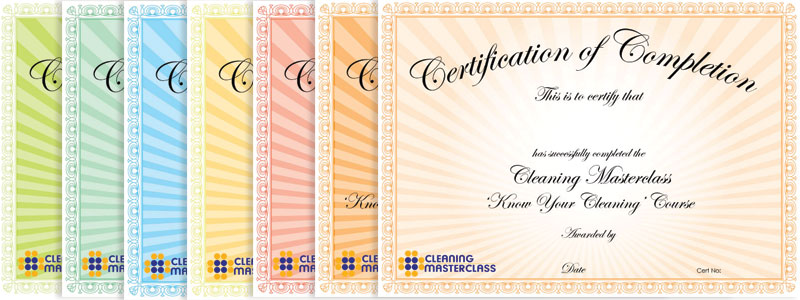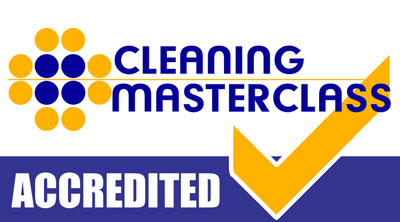Introduction
Domestic cleaning and working as a housekeeper are the only type of cleaning where the staff are face-to-face with the paying customer. In the eyes of the customer, the cleaning staff are the very visible representatives of the organisation they work for. No matter how much advertising and marketing has been spent, or pre-sales work, if all that effort goes to waste if the cleaning and presentation does not match the expectations of the customer.
Who Will Benefit from Our Practical Cleaning Skills Training Course?
All cleaners employed by domestic cleaning agencies
New domestic cleaners and housekeepers
Housekeepers & domestics in the Hotel & Hospitality Industry
Housekeepers & domestics in care homes
Internal induction & onboarding training
Departure and service cleans in service apartments
Cleaning supervisors
Choose the best training delivery option for you
On-Site
-
- One day course with half day option
- Option to include additional cleaner training modules
- 12 months support for delegates and organisation
- Optional follow-up training assessement
- From £475 per session of up to 10 delegates
Distance Learning
-
- Cost effective
- Study worldwide
- 12 months support for delegates
- Fully printable course materials
- Online assessment
Customised Learning
-
- Fully customised delegate workbooks
- Study worldwide
- 12 months support for delegates and organisation
- Fully printable course materials
- Optional online or onsite assessment
Course Overview
The overriding focus of this course is the customer – it’s all about the customer! Whether the customer is a paying guest in a hotel, a resident in a care home, or a homeowner, the customer and their expectations and requirements are always front and centre in this course. Customers demand and rightfully expect quality and standards of cleaning and hygiene to match their expectations as a minimum. The course does not stop there: students are greatly encouraged to adopt continuous improvement in all their working practices to meet and exceed quality in cleaning and cleaning standards.
What Will You Learn from The Course?
Knowledge of the key risk factors that have a <strong>direct and significant</strong> impact on an organisation: Appearance, hygiene and safety risks
Essential cleaning planning skills for <strong>efficient working</strong>
Choose and apply the <strong>most effective cleaning technique</strong> for the surface, safety and hygiene requirements and quality
Essential time management skills to <strong>prioritise tasks</strong>
Learn the <strong>most widely practiced cleaning techniques</strong>
The skills to spot <strong>potentially unsafe conditions</strong> in working practices, working environment, equipment and situations
Knowledge and understanding of <strong>continuous improvement</strong> principles for quality and safety
Learn and apply <strong>detailed</strong> cleaning standards
Learn to create a <strong>highly optimised and effective cleaning plan</strong>
Learn <strong>safe working cleaning practices</strong>
Course Content
Section
Summary

Impact of Cleaning
Housekeeping serves a vital role in the domestic and hospitality industry, it is second-to-none in terms of customer satisfaction, and ultimately the reputation of the organisation. This role must ensure the very best standard of cleaning service is provided, not just once, but every time. This is expected if not demanded by the customer, even if nothing is said or written.
However, housekeepers are often unaware of the consequences of their actions or inactions and the impact they have on the organisation and its customers. It is vitally important for housekeepers to understand that the standard of cleaning has a direct and significant impact of the successful operation and ultimately the reputation of an organisation. Everyone – staff, customers, and the public, must have confidence that the organisation can provide a safe and clean place, no exceptions.
This section starts by establishing the core essential cleaning principles by looking at the impact cleaning has on the organisation, its customers, staff and the public. To do that, the following topics are covered:
The four critical roles cleaners carry out every time: Cleaning for Appearance, Cleaning for Hygiene, Cleaning for Safety, and Cleaning for ‘Fit for Purpose’
The consequences of a poor appearance and visual standards to staff, customers and the general public
The risks of poor or insufficient hygiene control on surfaces for infection control
The risk of injury to people from poor or lack of good cleaning practices

Stages of a Clean
There are always time and workload pressures to meet deadlines and other pressures that seem to take up valuable time. It’s always feels like a rush. Coupled with the important need to clean those surfaces that attract the highest impact of cleaning risks as seen in the previous section. While these pressures can’t be eliminated, they can be controlled through forward planning cleaning activities. Everything we do in life and work typically follows a series of stages, with a beginning and an end point. Cleaning is no different.
This section takes the vital principles that impact cleaning and the risks they pose to the customer and organisation (previous section), and covers the practical ways to plan for cleaning, to make the cleaning as effective and efficient as possible.
This section covers the following topics:
Essential skills and techniques that will enable cleaning staff to plan their cleaning tasks to maximise their working efficiency
Essential skills and techniques to identify and prioritise the cleaning tasks according to the impact of cleaning
Creating effective cleaning plans for specific rooms as applicable – toilets, bathrooms, showers, kitchens, etc
Self-reviewing for continuous improvement
Good housekeeping practices

Cleaning Standards
Everyone has a different understanding of cleaning standards: what is a ‘high standard’ to one person may not be ‘high’ enough for another. How do we know when a surface is cleaned to a ‘high’ enough standard? Cleaning standards are written performance indicators that an organisation can use to measure the quality of the cleaning service provided. This is important to ensure a consistent, predictable, and repeatable level of service the organisation and its staff and customers expect. Cleaning standards is all about quality.
This section covers the following topics:
Understanding how the expectations and perceptions of all those people that use the room or area, including customers, must be reflected in cleaning standards
Creating a list of key cleaning standards for any room or area, considering the impact of cleaning risks and customer and staff expectations

Good Housekeeping Practices
Good housekeeping practice is both an attitude and practice that embraces every aspect of cleaning work and involves being constantly Active, Aware and Attentive in the workplace and immediate work area. Consistently high achieving cleaning staff need to be constantly active in keeping an orderly work practice, they need to be aware of potential hazards and not introducing new ones, and they need to attentive to quality in cleaning.
There is a direct relationship between cleaning staff actively keeping a workplace (including homes in domestic cleaning) in a safe and ordered condition and a working environment that improves productivity and morale for everyone. Crucially good housekeeping practices reflect a well-run organisation to customers or visitors from the outside.
This section covers the following topics:
Practices that encourage cleaning staff to be constantly active and aware of their surrounds as they work to ensure the workplace for everyone is an ordered and safe one
Practices that encourage cleaning staff to be attentive to detail as they are cleaning to ensure cleaning standards are fully and consistently met
An understanding that quality in cleaning embraces all aspects of cleaning, from storage cupboards to rubbish

Customer Care and Communication
Think about this: Housekeepers are the face of the organisation to customer, they represent the organisation when they meet the customer, when they work and when they leave. Throughout that whole stage, no matter how brief, they are interacting with the customer. Having a housekeeper or housekeeping team that understands how we communicate directly and indirectly with customers is vital to presenting the entire organisation in a positive light.
This section covers the following topics:
First impressions count – understanding how those first few moments sets the tone for the customer.
Presentation matter – How simple courtesy and good manners matter
Direct and indirect communication – how we communicate more indirectly than what we say
Practical help when developing a long-term customer relationship

Quality and Service in Cleaning
This section covers the following topics:
Practices that encourage cleaning staff to be constantly active and aware of their surrounds as they work to ensure the workplace for everyone is an ordered and safe one
Certified & Accredited
Where will this take you?


You will receive a personalised certificate (1 per user), each with a unique certification number. The certificate can be validated by simply contacting us.
You will be entitled to use the title of certified Cleaning Masterclass cleaner.


